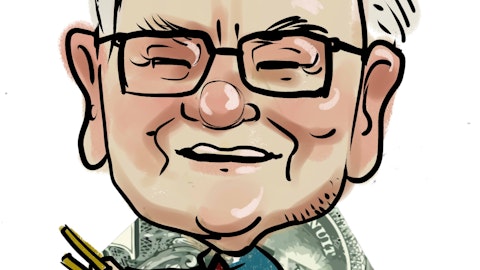The cable TV industry has consistently suffered subscriber losses over the past few years. Time Warner Cable Inc (NYSE:TWC)‘s subscriber base has declined from 13.3 million in 2007 to 12.2 million at the end of last year.
In contrast, satellite networks such as DIRECTV (NASDAQ:DTV) and DISH Network Corp. (NASDAQ:DISH) have performed much better.

Pay-TV is the highest revenue-generating stream for Time Warner Cable Inc (NYSE:TWC), as it contributes approximately 46% to the overall top line.
Time Warner Cable’s US Pay-TV market share has dropped from 13.4% in 2007 to 11.4% at the end of 2012. The decline is primarily due to superior performance by its competitors and the cable company’s late shift to the digital platform. Thus, several Time Warner Cable subscribers made a switch to satellite networks.
It must be noted, however, that other factors, such as increasing demand for fiber- optic solutions, HD/DVR services offered by satellite networks and sub-standard customer service by Time Warner Cable Inc (NYSE:TWC) also contributed to its decline.
Going forward, I expect the subscriber trend to improve slightly and the company’s market share to stabilize at around 11%.
Key revenue streams
Time Warner Cable is the second largest US cable TV provider. It generates approximately 46% of its total revenue through cable TV operations, followed by broadband services at 28% and digital phone (voice over internet protocol) at 11%.
With a current market cap of $27 billion, the stock currently trades at around 93% of its 52-week high. The company operates on an EBITDA margin of approximately 38% and this year’s FCF-to-EBITDA is expected to be around 44%.
Competitive landscape
Part of Time Warner Cable Inc (NYSE:TWC)’s drop in subscribers is due to a customer shift to satellite services.
Parallel to cable TV, satellite service providers, such as DirecTV and DISH Network Corp. (NASDAQ:DISH) directly compete with Time Warner Cable.
DirecTV currently has a 19% market share in the pay-TV segment with a robust presence in the US and Latin American markets.
It generates more than half, or 56%, of revenue through US Satellite TV, followed by satellite services in Latin America, where 22% of sales are generated. It has a market cap of $31.4 billion, and the current stock price is trading at 98% of its 52-week high.
During fiscal 2012, it maintained a gross margin of 46% and going forward, FCF-to-gross profit is expected to be around 19%. DirecTV has a massive reach across the US, as it’s accessible even from the most isolated areas.
It must be highlighted that DIRECTV (NASDAQ:DTV)’s satellite service has relatively low initial costs, a greater variety of HD channels relative to its competitors and sets the industry benchmark for customer service.
Dish Network generates 69% of its revenue through satellite services. The closest second is TV advertising, which accounts for 10% of sales followed by DVR Service at 9%.
It had approximately 13.5% market share in the pay-TV segment by the end of 2011. The company has a market cap of $16.7 billion, and the stock has been trading at 95% of its 52-week high.
During fiscal 2012, the company operated on a gross margin of 46%, which is similar to DirecTV. This year’s FCF-to-gross profit is expected at around 22%.
Going forward, gross margins may decline as content owners are now demanding a higher carriage fee. In order to maintain its competitive edge and avoid subscriber loss, Dish Network may absorb the rising content costs at the expense of gross margins.
Subscriber loss may slow
Since 2006, Time Warner Cable has experienced a loss of approximately 200,000 subscribers each year. The subscriber volume saw attenuation from 13.4 million to 12.1 million since that time; however, as the switch to digital platforms looks complete, the subscriber loss should slowdown in the long run.
I expect the company to incur subscriber loss this year, mainly due to the absence of augmented services and groundbreaking technology.Time Warner Cable Inc (NYSE:TWC) should, however, start reporting better numbers in the following years, as it closes the gap on its competitors by offering advanced technology and better services to customers.
Furthermore, efforts made, such as streaming apps on android devices to enable access of live programming and the production of a wide range of programs targeted at a larger audience, will enable it to narrow the gap. If Time Warner Cable is able to tighten the gap successfully, then it may be able to add 50,000 subscribers annually in the long run, which implies a stable market share of around 11%.
Market share still unlikely to grow
Time Warner Cable Inc (NYSE:TWC) has employed multiple strategies in order to spur subscriber growth and expand its market share in the pay-TV segment; however intense competition provided by the likes of DirecTV and Dish Network has resulted in continuous subscriber loss over the past five years. DirecTV has consistently grown its market share by offering exceptional customer service and highly differentiated programming such as NFL Sunday Ticket.
Likewise, Dish Network packaged broadband and voice services with pay-TV will provide the company a distinctive competitive edge over traditional cable-TV services. Furthermore, the unique DVR services enable users to tenuously access the paid programming.
The overall market is highly competitive and nearing saturation, therefore gaining market share from satellite services and other cable-TV networks will continue to be an extremely challenging task for Time Warner Cable Inc (NYSE:TWC).
Why a bearish outlook?
Observing the historical trends and the saturating pay-TV market, the outlook for Time Warner Cable is not highly optimistic. Nonetheless, if the company can slowdown the subscriber losses and gradually develop incrementally by adding new subscribers, there may be subsequent upside to its stock price. If Time Warner Cable can somehow push its market share above the 13% mark, then we may witness an even sharper upward rally by its stock.
The challenge provided by other players in the cable-TV space combined with Time Warner Cable Inc (NYSE:TWC) Cable’s inferior offerings will not allow it to sustain a market share above 11%. Going forward, it must add more than 250,000 subscribers annually in order to push its market share close to 13%, which in the given environment looks vastly improbable.
The article Growth in Pay-TV: Time Warner Cable’s Last Stand originally appeared on Fool.com and is written by Ashit Gulati.
Copyright © 1995 – 2013 The Motley Fool, LLC. All rights reserved. The Motley Fool has a disclosure policy.


